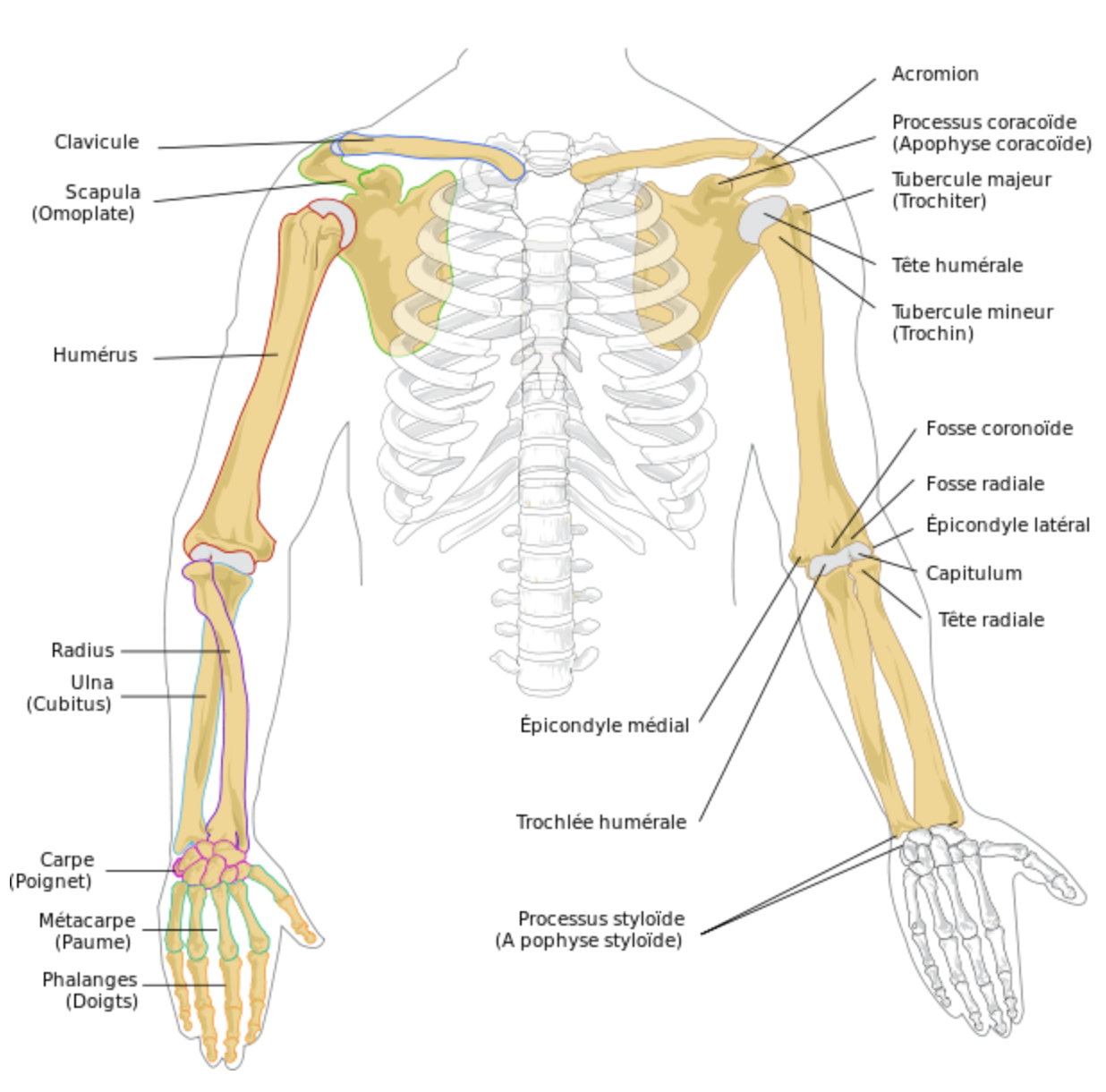
No of bones present in an arm is:
(A) 30
(B) 32
(C) 35
(D) 40
Answer
492.3k+ views
1 likes
Hint: The number of bones that is present in the arm of a human being is the same as the number of teeth present in an adult human being. No bones are distributed in a different manner in the forearm, radius, and upper arm.
Complete step by step answer:
The total number of bones which are present in the upper arm of a human being is 32 which is exactly the same as the number of teeth in adults i.e 32. Humerus, also known as the upper arm, radius, and ulna are also known as the forearm, which together make up the arm.

The palm of a human being consist of a total of 27 bones, which is distributed as
- The wrist is made up of carpals which are eight in number.
- Metacarpals which are five in number.
- Phalanges, which are fourteen in number.
- Two lower arm bones present on each side ( Ulna and Radius).
- Three upper arm bones present on each side i.e one humerus and two pectoral girdles.
So, the correct answer is ‘32’.
Additional Information: The human skeleton of an adult consists of something around 206 to 210 bones. The exact number depends on the counting of the sternum, whether it is included or not. At the time of birth it's composed of 270 bones but later decreases to 80 bones within the skeletal structure and 126 bones within the appendicular skeleton. Many small accessory bones, like some sesamoid bones, aren't included during this count. There are 20 major bones present in an individual.
Note: Pectoral girdle is part of the shoulder but it is counted in bones of arms because it is the set of bones in the appendicular skeleton which connects to the arm on each side. There are a total of 64 bones in the arms i.e 32 +32.
Complete step by step answer:
The total number of bones which are present in the upper arm of a human being is 32 which is exactly the same as the number of teeth in adults i.e 32. Humerus, also known as the upper arm, radius, and ulna are also known as the forearm, which together make up the arm.

The palm of a human being consist of a total of 27 bones, which is distributed as
- The wrist is made up of carpals which are eight in number.
- Metacarpals which are five in number.
- Phalanges, which are fourteen in number.
- Two lower arm bones present on each side ( Ulna and Radius).
- Three upper arm bones present on each side i.e one humerus and two pectoral girdles.
So, the correct answer is ‘32’.
Additional Information: The human skeleton of an adult consists of something around 206 to 210 bones. The exact number depends on the counting of the sternum, whether it is included or not. At the time of birth it's composed of 270 bones but later decreases to 80 bones within the skeletal structure and 126 bones within the appendicular skeleton. Many small accessory bones, like some sesamoid bones, aren't included during this count. There are 20 major bones present in an individual.
Note: Pectoral girdle is part of the shoulder but it is counted in bones of arms because it is the set of bones in the appendicular skeleton which connects to the arm on each side. There are a total of 64 bones in the arms i.e 32 +32.
Latest Vedantu courses for you
Grade 10 | MAHARASHTRABOARD | SCHOOL | English
Vedantu 10 Maharashtra Pro Lite (2025-26)
School Full course for MAHARASHTRABOARD students
₹33,300 per year
Recently Updated Pages
Master Class 11 Economics: Engaging Questions & Answers for Success

Master Class 11 Business Studies: Engaging Questions & Answers for Success

Master Class 11 Accountancy: Engaging Questions & Answers for Success

Master Class 11 English: Engaging Questions & Answers for Success

Master Class 11 Computer Science: Engaging Questions & Answers for Success

Master Class 11 Maths: Engaging Questions & Answers for Success

Trending doubts
State and prove Bernoullis theorem class 11 physics CBSE

1 ton equals to A 100 kg B 1000 kg C 10 kg D 10000 class 11 physics CBSE

State the laws of reflection of light

One Metric ton is equal to kg A 10000 B 1000 C 100 class 11 physics CBSE

1 Quintal is equal to a 110 kg b 10 kg c 100kg d 1000 class 11 physics CBSE

Difference Between Prokaryotic Cells and Eukaryotic Cells




